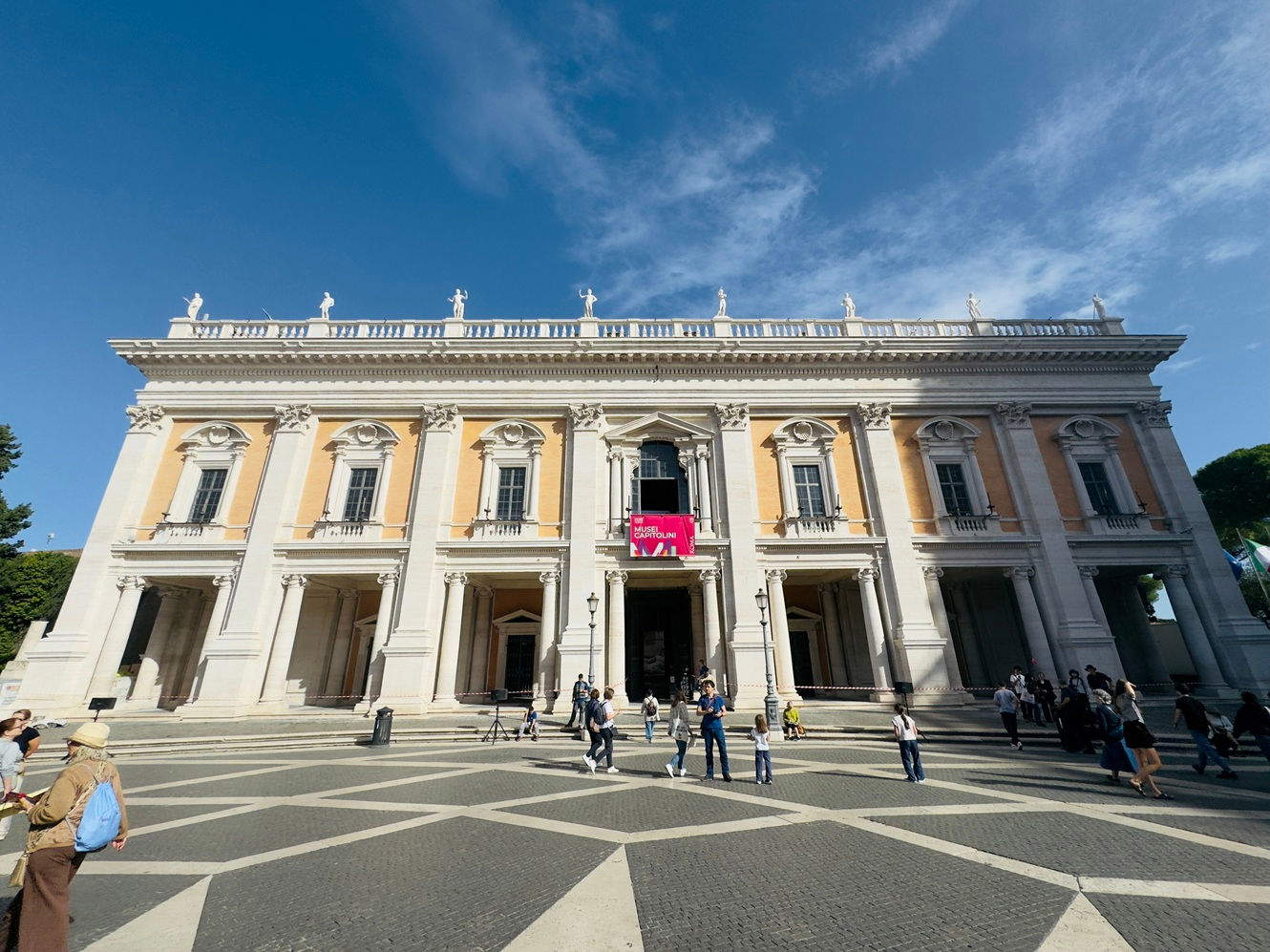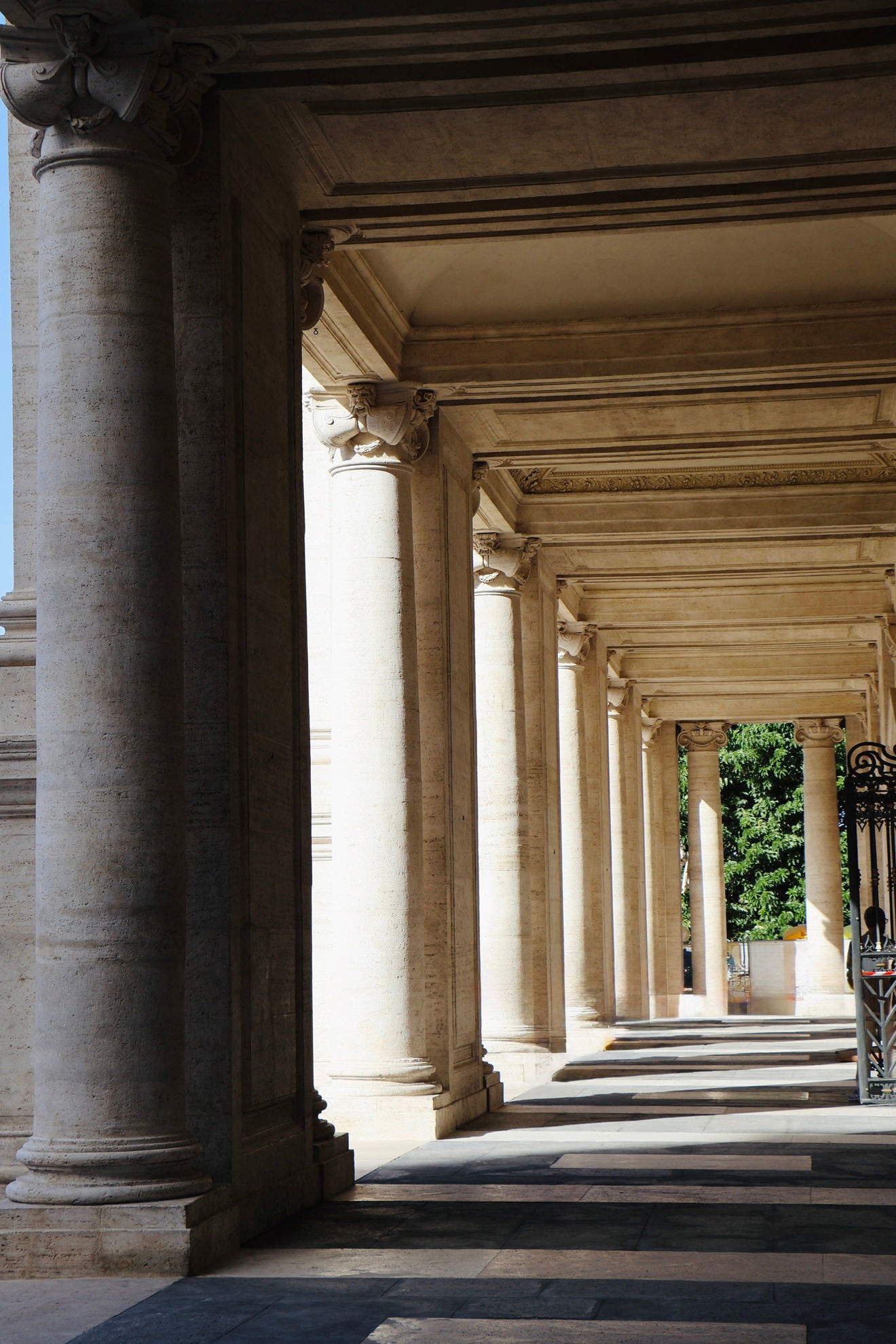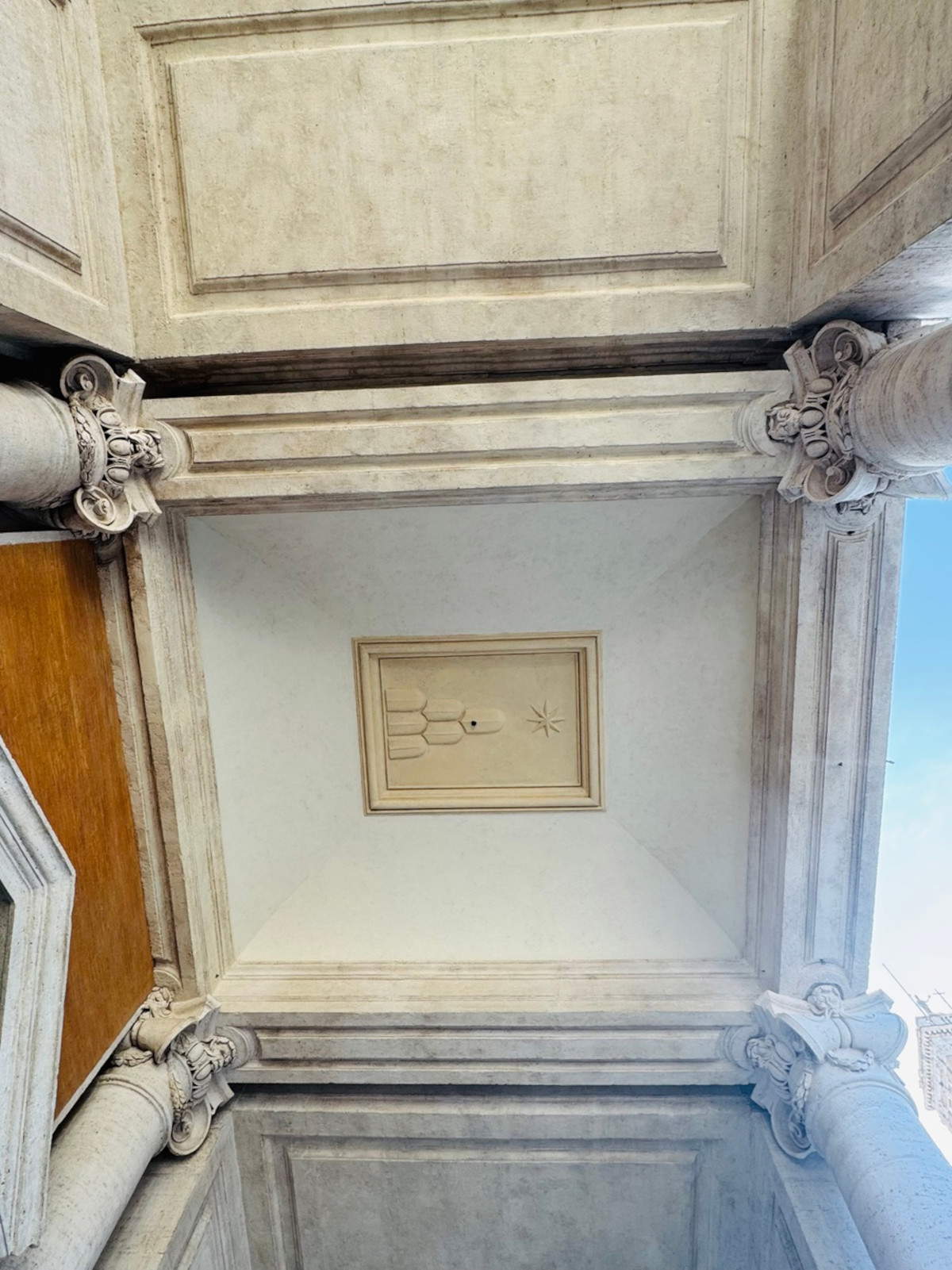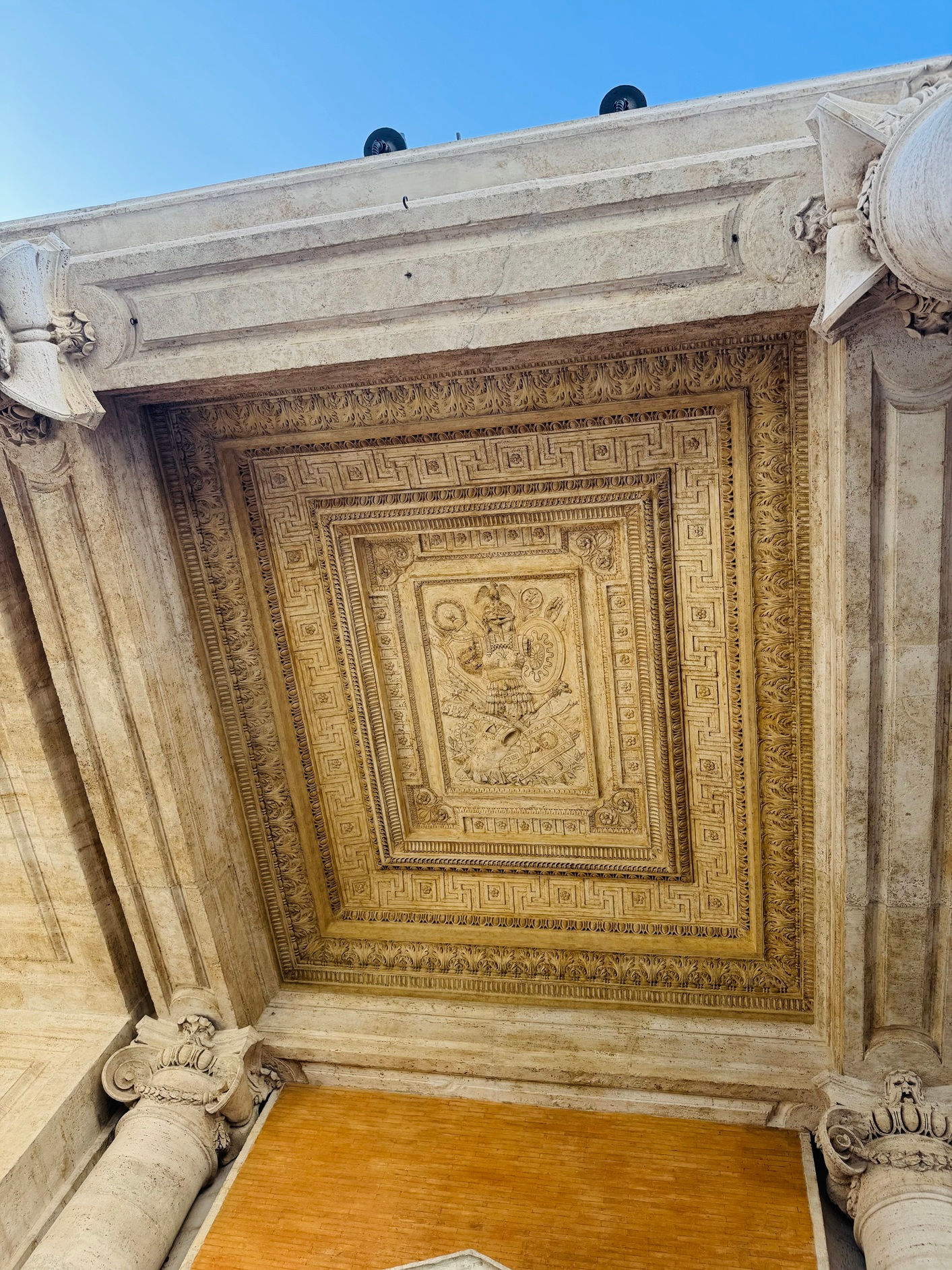The facades of Palazzo dei Conservatori and Palazzo Nuovo, the two unmistakable architectural backdrops that frame Rome’s Campidoglio Square, are back on view in a renewed guise after the completion of restoration work that began in November 2024. This is the first phase of a larger redevelopment program of the Capitoline complex, financed with PNRR - Caput Mundi funds for a total amount of 3,510,000 euros. The intervention marked an important step in the recovery of the symbolic center of the city, which will be completed by June 2026 with the restoration of the facade of Palazzo Senatorio and the maintenance of the paving of the square. The project also includes the installation of a new artistic lighting system that will enhance the Michelangelo-esque architecture and proportions of the entire complex.
The work just completed involved the elevations of the two buildings that house the Capitoline Museums, the center of Roman history and culture. Restoration operations involved the brick curtain, the architectural elements and the sculptural apparatus of the balustrades. Particular attention was paid to the consolidation and cleaning of the surfaces, with the aim of restoring legibility to the original forms and preserving the historical material without altering the patina of time. The intervention also included the recovery of the basalt and travertine floors of the two porticoes, as well as the restoration of the ceilings, which were the subject of a systematic conservation action for the first time. Work was also carried out on the rainwater disposal system, adapting it to the requirements of building protection and sustainable stormwater management. The works as a whole returned the two buildings to full functionality and an appearance consistent with the monumentality of the context.


The project is part of the program for the enhancement of the Capital’s identity places, which through the PNRR - Caput Mundi aims at the redevelopment of the architectural and artistic heritage, with special attention to the sites of greatest tourist and symbolic appeal. Piazza del Campidoglio, conceived by Michelangelo in the 16th century, represents one of the highest expressions of Renaissance town planning and a meeting point between the city’s historical memory and civic life. Michelangelo’s arrangement of the Capitoline Hill dates back to 1538, when Pope Paul III entrusted the artist with the task of reorganizing the hill that for centuries had represented the political and religious center of ancient Rome. Michelangelo’s design gave architectural unity to the pre-existing buildings, Palazzo Senatorio and Palazzo dei Conservatori, creating a coherent and perfectly calibrated setting, framed by the elliptical design of the square.
Work continued in the following decades with contributions from Giacomo della Porta, Girolamo and Carlo Rainaldi, until the completion, in the late seventeenth century, of Palazzo Nuovo. The formal continuity between the two side buildings, conceived by Michelangelo himself, helped create a perspective balance that still defines the square as an architectural unicum. Palazzo dei Conservatori, built in the mid-15th century at the behest of Pope Nicholas V, was initially the seat of the city’s magistracy, which flanked the senator in urban government from at least 1363. With Michelangelo’s intervention, the façade was completely redesigned according to a rigorous geometric scheme: giant Corinthian pilasters mark the structure vertically, while the Ionic columns of the portico define its rhythm and depth. The whole restores a balance between classicism and monumentality that influenced the civil architecture of later centuries.


Palazzo Nuovo, conceived as a symmetrical pendant of the Palazzo dei Conservatori, was begun in 1603 at the behest of Pope Clement VIII and carried out by Girolamo Rainaldi. Construction continued for nearly a century and faithfully reproduced the articulation and proportions of Michelangelo’s model, helping to complete the visual layout of the square. In 1734, under the pontificate of Clement XII, the Capitoline Museum was inaugurated and housed in the twin palaces themselves. The pontiff acquired Cardinal Alessandro Albani’s collection of ancient sculpture, marking the birth of the first public museum in modern history, open to citizens and visitors from around the world.
The recent restoration of the elevations is thus in keeping with a long tradition of protecting and enhancing the Capitoline complex. The interventions have restored full legibility to the surfaces and sculptural details, improved conservation conditions and enhanced visitor enjoyment.
 |
| Capitol, restoration of the elevations of Palazzo dei Conservatori and Palazzo Nuovo completed |
Warning: the translation into English of the original Italian article was created using automatic tools. We undertake to review all articles, but we do not guarantee the total absence of inaccuracies in the translation due to the program. You can find the original by clicking on the ITA button. If you find any mistake,please contact us.